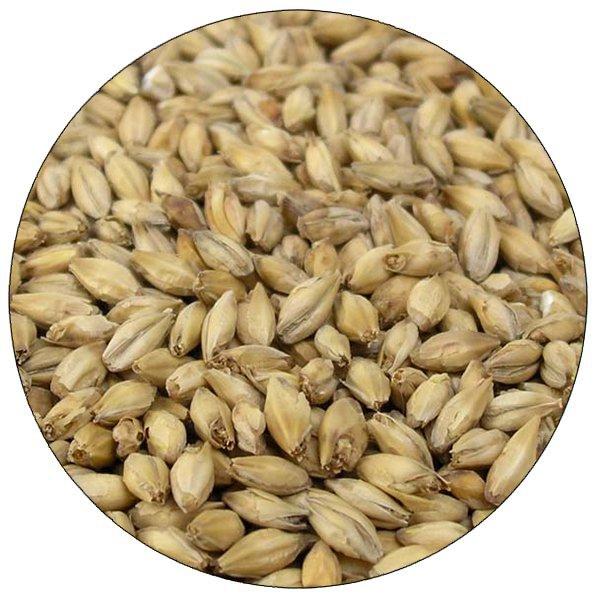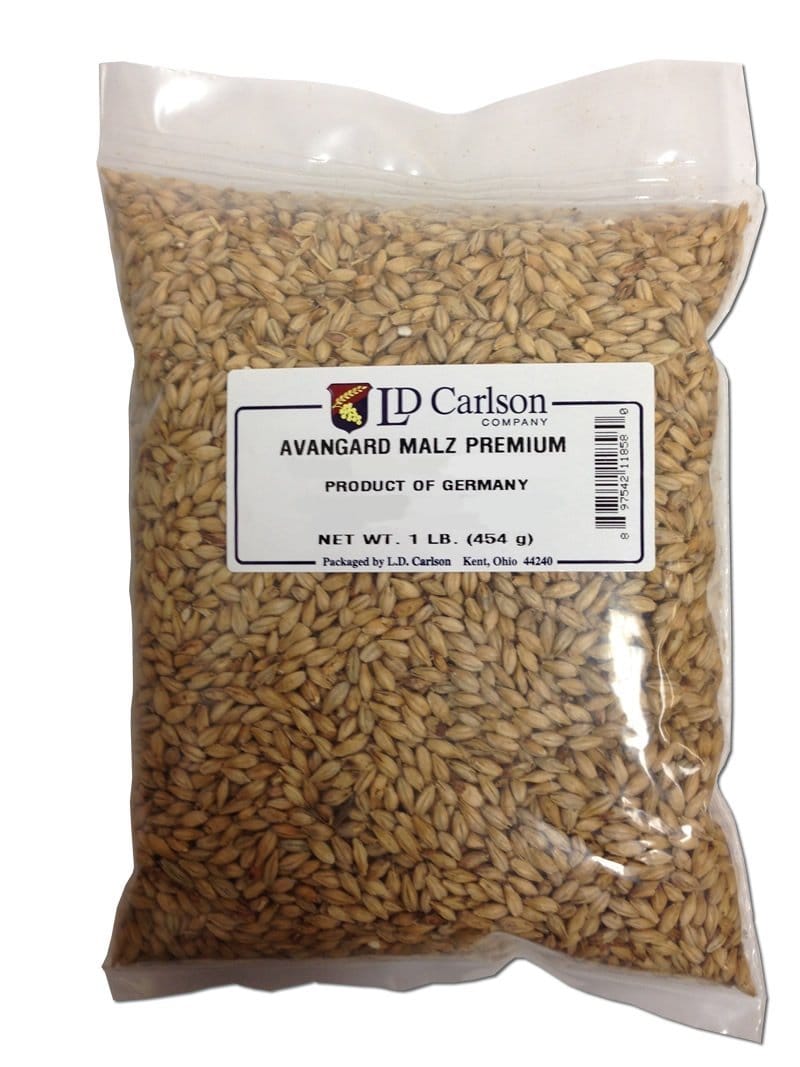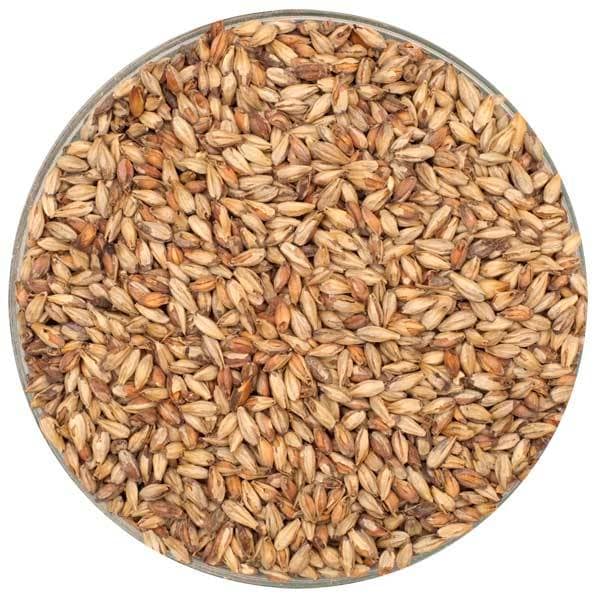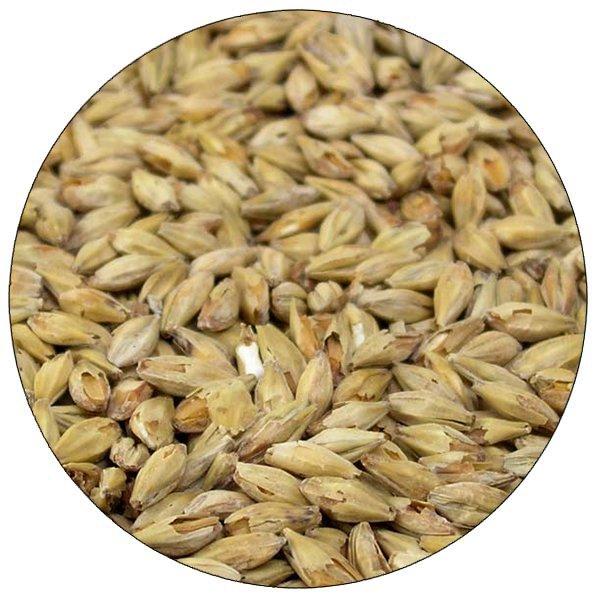- Rye Malt Guide – How to Use This Malt for Distinctive Homebrews - November 24, 2022
- Aromatic Malt Guide – Why I Use This Malt in My Homebrew Recipes - November 19, 2022
- Willamette Hops Guide – Why I’m a Fan of This Classic American Hop - November 9, 2022
I prefer using malts that can make a variety of different homebrews, and this was one reason I started to produce beers with Aromatic malt.
This is one of the most diverse malts as you can make many different beer types with aromatic malt, which I enjoy the rich taste and golden finish.
If you have yet to use this malt, my aromatic malt guide has all the information you need to start brewing top-class beers with a deep malty flavor.
Bottom Line Up Front
I enjoy using Aromatic malt to homebrew bocks, lagers, Dunkels, and brown ales. This malt works great when you use up to 10% in your recipe. While higher quantities can overpower beers, its toasted flavors, rich malty taste, and smooth finish put it up amongst my favorite malts.

Pros and Cons of Aromatic Malt
Pros
- Aromatic malt provides a rich malty flavor and a smooth finish.
- You can homebrew many beer types with this malt, including brown ales, Dunkels, and bocks.
- This malt has a lovely color at 20°L.
- You can also get sweet honey flavors if you use lesser quantities.
- Aromatic malt can be used as a base malt as it has enough diastatic power to convert.
Cons
- Using this malt in higher quantities can spoil your homebrew.
Flavor Profile
I find that aromatic malt has an intense flavor that is perfect if you are looking to brew a beer where you want a malty aroma to stand out.
I like the rich finish of aromatic malts. While they don’t suit a lot of beers and ales (significantly lighter varieties where a pale malt would be more suitable), I think there are beer types where an aromatic malt flourishes.
The flavor and aroma of aromatic malt suits beers where you want to exaggerate the malty finish to your homebrew.

The Kilning Process
Kilning is integral to creating a solid malt that can be used as a homebrew ingredient.
This process involves removing unwanted moisture from the grain; the length and temperature depend on the type of malt and end result you want. Aromatic malt is generally kilned at 239°F (115°C) until it reaches a color of 20°L.
This color is towards the higher end of the scale (hence the rich, full-bodied, malty flavor), but it isn’t anywhere near as dark as particular Crystal malts that go over 120°L.
How Much to Use
I have used aromatic malts in several of my homebrew beer and ale recipes.
I find that you can use aromatic malts up to 10%. This provides a rich, malty flavor to your brews, but I think any higher than this and it will start to impact the flavor negatively.
Aromatic malts have enough enzymatic power to convert itself, so I suppose you could make a beer entirely from this malt; however, I always think it is best used in smaller quantities.
Storing Aromatic Malt
I have yet to find a lot of differences between storing an aromatic malt and any other malt variety, So the usual rules apply here.
My advice to correctly store malt at home is to:
- Keep it at a consistent temperature under 59°F (15°C).
- Store malt in a low-humidity environment.
- Ensure that the container is well sealed.
- Don’t store the malt directly on the floor.
In my experience, you can store malt and still use it successfully in your homebrews for one year.

What Kind of Beers Can You Make from Aromatic Malt?
One of the main reasons I enjoy using aromatic malt in my homebrew endeavors (aside from its rich flavor) is that I think it is quite a versatile malt. You can make several different beer types from aromatic malts, and here are four that I have tried previously.
I think aromatic malt is the perfect variety for a bock beer, as this is one type of homebrew where you want the maltiness to come forward in abundance.
While Munich and Vienna malt is often favored in a bock, I like to use aromatic malts more often because I enjoy the taste, and I think they contribute to a well-rounded beer.
If you plan on using aromatic malt in a bock-style beer, I recommend using between 5 – 10% to add a malty body without overpowering the beer.
Brown Ales
I don’t make brown ales a lot, but sometimes I get an idea in my head and decide to plow on with a brown ale recipe. This is another variety that I think aromatic malts are perfectly suited to.
I’ve combined aromatic malts with Munich, Special B, and a selection of hops to create a lovely brown ale before. I’ve found that Willamette hops work great in this kind of recipe.
The toasty finish you want with a brown ale can be achieved with aromatic malts, and the malt color is ideal for a brown ale too.

Dunkel
Consider a Dunkel beer if you want to use slightly more aromatic malt in one of your homebrew recipes.
Dunkel’s are characterized by deep dark colors combined with a rich malty flavor. I have created a few Dunkel recipes that have used aromatic malts, which have all turned out well.
I think you will need to include Munich malts, but aromatic malts provide an excellent addition to a Dunkel recipe. If you also want something different in a Dunkel homebrew, try and find Vojvodina hops with the cedar, tobacco, and spice notes that would add another dimension to the overall flavor.

Lager
Lastly, we have a good-old lager.
On paper, you wouldn’t think aromatic malt would work great in a lighter lager recipe as its primary use is in darker and richer beers. However, I think it could fine-tune a well-rounded and delicious lager if you use aromatic malt in lesser amounts (up to 6%).
Some hops I suggest using with aromatic malt, Munich, and Vienna malts include Cascade and Hallertau. This is an excellent way to experiment with aromatic malt as, while they aren’t often used in lighter lagers, I think they have great potential to create an interesting beer.

Malt Analysis
| Color | 50–55 EBC/20 °L |
| Moisture content | 4.5% |
| Extract (DBFG) | 79.0 |
| Total Protein | 12.0% |
| Usage | Typically 10% |
Alternatives to Aromatic Malt
I rarely find it difficult to buy aromatic malt; however, if you are having issues or want to try a malt that can produce similar results, here are three alternatives you can consider.
Munich Malt

Munich malt is one of the most well-known malts, and it is used regularly in a lot of homebrew recipes. Aromatic malts are a Munich hybrid, so they can complement each other or work together to create some lovely-tasting brews.
I find the malty flavor very similar between Munich and aromatic malts so that you can achieve the same finish to your beers. With Munich malts, I have made bocks, Dunkels, and darker ales, and I think it can also work in IPAs and pale ales.
Read my complete Munich malt guide for more information.
Pros
- I like the similar malty flavor between Munich malt and aromatic malt.
- Munich malt is easy to buy and is widely available.
- You can make many different beer types with Munich malt.
Cons
- You can’t use Munich malt as a base malt due to its low diastatic power.
Victory Malt

I’m a fan of using Victory malt, which offers some similar attributes to an aromatic malt.
You will notice that Victory malt is slightly darker in color compared to aromatic. The average Lovibond measurement of aromatic malt is 20º, whereas Victory is 28º. The difference isn’t huge, but you will notice it, and I think this is why I would consider Victory a good alternative to aromatic malts for darker beers.
Victory works well in Dunkels, dark ales, bocks, and other beer types that require an amber or browner color. Overall, I like using Victory malt, and there are definite similarities between this variety and aromatic malt.
Pros
- There are similar flavors between Victory malt and aromatic malts.
- This malt works great in darker beers.
Cons
- Victory has a darker color than aromatic malt.
Honey Malt

I’ve found that when you use aromatic malt in smaller quantities, you get a honey flavor in beer. So, Honey Malt is a good alternative to aromatic if you want to capture a similar taste.
I also think that honey and aromatic malts have a similar color, around 20º, which produces a comparable finish. Honey malt can work in a number of different beer styles ranging from pale ales, lager, and bocks, and you can even offset darker Dunkel flavors with a sweet taste.
Be careful using too much of this malt in your recipe, as I have found that higher amounts can take over the beer and reduce the flavor of other malts and hops.
You can read my full honey malt guide to get a better idea of how to use this malt.
Pros
- If you use aromatic malt in smaller quantities, honey malt provides a similar sweet finish.
- This malt can be used in many beer styles, from bocks, pale ales, lagers, and Dunkels.
Cons
- Using too much of this malt will overpower your homebrew.
Frequently Asked Questions
Question: What is an aromatic malt?
Answer: Aromatic malts are a variety that provides a full, rich-bodied malty flavor and is ideal for darker beers and ales. This malt type is kilned at 239°F (115°C) and is noticeably amber with a Lovibond measurement of 20°L.
Question: What does aromatic malt taste like?
Answer: I think that an aromatic malt has a very obvious rich malty finish. I enjoy using this malt in homebrews, where I want an exaggerated malty finish to my beers and ales. You will also pick up honey notes when using aromatic malt in smaller amounts.
Question: Is aromatic malt a base malt?
Answer: Yes. You can use aromatic malt as a base malt because it has enough diastatic power to convert during mashing.
Question: What malts are similar to aromatic malt?
Answer: Some of the malts that I think are similar to aromatic malt and can be used as a substitute include Munich, Victory, and honey malt. I think these three share many characteristics, and you can make similar-tasting beers and ales.
Question: How long can you keep malt?
Answer: Generally, you can store more for around one-year and still use it in your homebrew recipes. I find that keeping it at a consistent temperature under 59°F (15°C), ensuring it is in a sealed container, and a low humidity environment are the best ways to keep malt fresh.
Conclusion: Aromatic Malt Is Ideal for Bocks, Darker Beers, and Brown Ales
Aromatic malt opens up a lot of possibilities to create some lovely-tasting beers and ales.
I enjoy using this malt because it provides a rich malty finish to the beer. I have made bocks, lagers, Dunkels, and brown ales with aromatic malt, and if you use lesser quantities, you can achieve a sweet honey finish too.
Like most malts, be wary of using aromatic malt in higher quantities as it can have a negative effect. Still, overall I think this is a malt that every homebrewer should experiment with.

